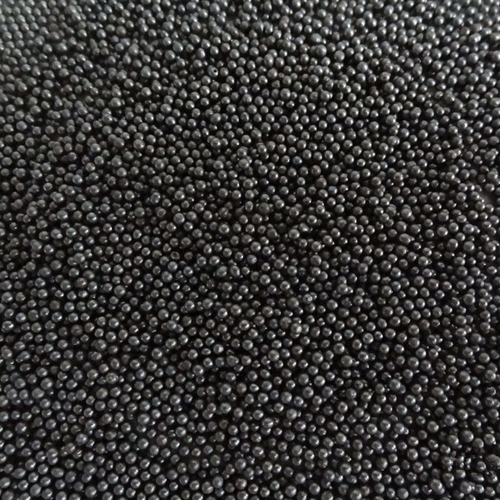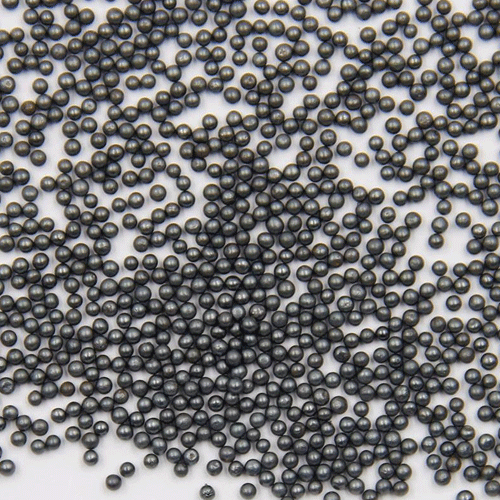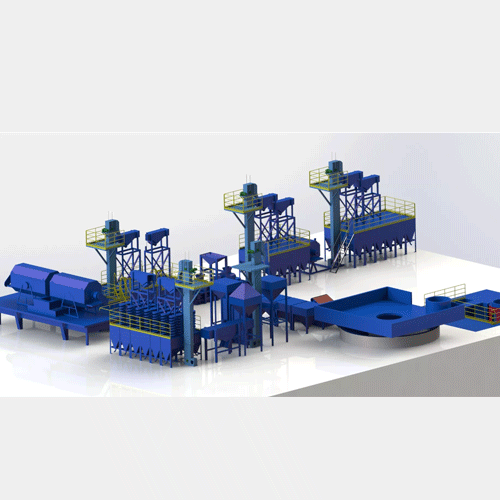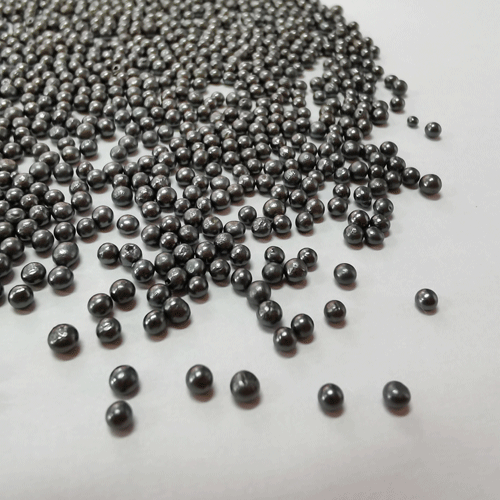Bearing steel grit is the main additive for bearing sleeves and rolling elements. The basic structural components of bearing sleeves and rolling elements are important components of bearings. The performance indicators and testing methods of bearing steel grit are very important, and will be introduced in detail below.
1. Performance indicators of bearing steel grit
Hardness (HRC): It is the main index to characterize the hardness of bearing steel grit, usually expressed in terms of Rockwell hardness HRC. The hardness range of bearing steel grit is 69-92HRC. Hardness below or equal to this range is not suitable for bearing production.
Particle size (d): refers to the particle size of bearing steel sand, usually expressed in millimeters (mm). Bearing steel grit for different uses has different particle size requirements. For example, the d value of bearing steel grit used to manufacture deep groove ball bearings should generally be between 3.2 and 0.08.
Bulk density (D): It is an index that characterizes the uniformity of the internal structure of bearing steel grit, usually expressed in grams/cubic centimeter (g/cm³). High-quality bearing steel grit should have a low D value to reduce wear between rolling elements and cages.
Magnetism (M): refers to whether the bearing steel grit is magnetic, usually expressed as residual magnetism (Br). High-quality bearing steel grit should have a high M value to improve the operating stability and life of the bearing.
Chemical composition (C, P, S): refers to the main elements contained in bearing steel grit, usually expressed in mass fraction (%). Bearing steel grit containing too much C, P, S and other elements will reduce its mechanical properties and wear resistance, while containing too little C, P, S may affect its fatigue performance.
Lubricant performance: refers to the ability of bearing steel grit to provide good lubrication during use, usually expressed in terms of dust collection and carbon residue. The good lubrication performance of bearing steel grit can reduce the wear between rolling elements and rings, reduce noise, and increase bearing life.
2. Testing methods for bearing steel grit
Rockwell hardness test: It is a commonly used method to measure the hardness of bearing steel grit. The principle is to use a Rockwell hardness testing machine to press the sample into the Rockwell hardness tester, measure the depth of intrusion and detect the diameter of the indentation, thereby calculating Hardness value. Test results are displayed on the HRC scale.
Microhardness test: It is a non-destructive testing method that can be used to determine the microstructure and chemical composition of bearing steel grit. The test principle is to grind the bearing steel into small particles of about 100 microns, and then load these small particles into a hardness tester to measure its microhardness value.
Metallographic analysis method: It is a method to evaluate the quality of bearing steel grit by observing its metallographic structure. Metallographic analysis methods can be divided into two types: electron microscopy analysis and optical microscopy analysis. Electron microscopy analysis is suitable for observing the size and distribution of coarse particles in the organization; optical microscopy analysis is suitable for observing detailed characteristics such as the size, shape and orientation of grains in the organization.
Magnet method: It is a method that uses the adsorption performance of magnets to test the magnetism of bearing steel sand. The magnet method is suitable for detecting the content of non-ferrous metal elements such as cobalt, nickel, etc. contained in ferromagnetic materials.
 Features of Reaguan Steel Shots
Features of Reaguan Steel Shots
 Metal surface shot peening process
Metal surface shot peening process
 Grinding Applications in the Automotive Industry
Grinding Applications in the Automotive Industry
 Tips and features for using shot blasting machine steel shots
Tips and features for using shot blasting machine steel shots